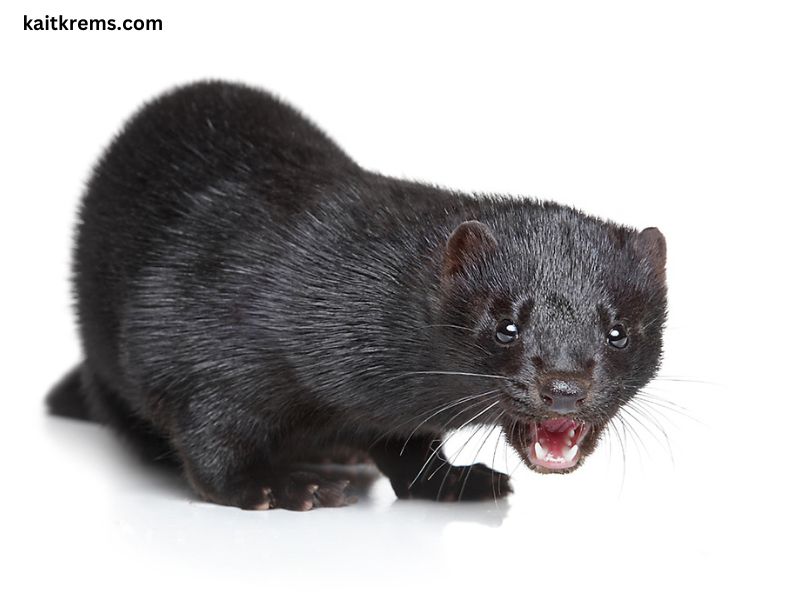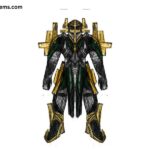Drag the Mink Without Getting It Wet As an experienced furrier, I understand the importance of properly handling and transporting mink pelts. “Dragging the mink” is a term used to describe the process of moving mink pelts from one location to another, typically during the harvesting or processing stages. This delicate task requires great care and attention to detail to ensure the mink’s quality and condition are maintained throughout the journey.
Why is it important to keep the mink dry?
Mink pelts are highly sensitive to moisture and can be easily damaged if exposed to water or excessive humidity. When the mink gets wet, the fur can become matted, discolored, or even start to deteriorate, significantly reducing its value and marketability. Keeping the mink dry is crucial to preserving its natural luster, softness, and overall quality, which are the hallmarks of a premium mink pelt.
Common mistakes to avoid when dragging the mink
As a seasoned furrier, I’ve witnessed firsthand the consequences of improper mink handling. Some of the most common mistakes include:
- Dragging the mink on wet or damp surfaces
- Exposing the mink to rain, snow, or other sources of moisture during transport
- Storing the mink in humid or poorly ventilated areas
- Failing to use appropriate tools and equipment to support the mink’s weight and shape
- Applying excessive force or pressure during the dragging process
These missteps can lead to irreversible damage to the mink’s fur, resulting in significant financial losses and a tarnished reputation within the industry.
Essential tools for dragging the mink Drag the Mink Without Getting It Wet It Wet it wet
To ensure a successful and dry mink drag, it’s crucial to have the right tools and equipment at your disposal. Some of the essential items include:
- Sturdy, waterproof tarpaulins or tarps to create a dry, protective surface for the mink
- Specialized mink-handling carts or sleds with built-in suspension systems to minimize stress on the pelts
- Absorbent pads or sheets to place beneath the mink and soak up any moisture
- Humidity and temperature monitoring devices to ensure optimal environmental conditions
- Protective gloves and clothing to maintain cleanliness and prevent contamination
By investing in these specialized tools, you can significantly reduce the risk of water damage and maintain the mink’s pristine condition throughout the dragging process.
Step-by-step guide to dragging the Drag the Mink Without Getting It Wet It Wet it wet
- Prepare the Dragging Surface: Lay out a large, waterproof tarpaulin or tarp in the designated dragging area. Ensure the surface is clean, dry, and free of any debris or sharp objects that could potentially damage the mink.
- Position the Mink: Carefully transfer the mink pelts onto the prepared surface, arranging them in a way that minimizes contact between individual pelts and allows for easy maneuvering.
- Secure the Mink: Use specialized mink-handling carts or sleds to gently lift and support the mink pelts during the dragging process. These tools are designed to distribute the weight evenly and prevent any undue stress on the delicate fur.
- Monitor Environmental Conditions: Regularly check the temperature and humidity levels in the dragging area to ensure they remain within the optimal range for mink handling. Adjust the environment as needed to maintain the mink’s ideal conditions.
- Drag the Mink Drag the Mink Without Getting It Wet It Wet Carefully: Slowly and steadily pull the mink-handling cart or sled, taking care to avoid sudden movements or jerky actions that could disrupt the pelts. Maintain a consistent, controlled pace throughout the dragging process.
- Inspect and Adjust: Periodically inspect the mink pelts during the drag to ensure they remain dry and undamaged. If necessary, make adjustments to the positioning or handling to address any issues that arise.
- Secure the Mink for Transport: Once the mink has been successfully dragged to the desired location, carefully transfer the pelts into a secure, climate-controlled environment for further processing or storage.
By following this step-by-step guide, you can ensure that your mink dragging operations are carried out with the utmost care and precision, minimizing the risk of water damage and preserving the integrity of the valuable pelts.
Tips for maintaining the quality of the mink while dragging
In addition to the step-by-step guide, here are some valuable tips to help you maintain the quality of the mink throughout the dragging process:
- Avoid Excessive Handling: Minimize the number of times the mink pelts are handled to reduce the risk of damage or contamination.
- Maintain Cleanliness: Ensure that the dragging area, tools, and equipment are thoroughly cleaned and disinfected before use to prevent any dirt or debris from compromising the mink’s condition.
- Regulate Temperature and Humidity: Monitor the environmental conditions closely and make adjustments as needed to keep the temperature and humidity within the optimal range for mink handling.
- Utilize Absorbent Materials: Place absorbent pads or sheets beneath the mink pelts to quickly wick away any moisture that may come into contact with the fur.
- Inspect and Address Issues Promptly: Regularly inspect the mink during the dragging process and address any concerns, such as matting or discoloration, immediately to prevent further damage.
By incorporating these tips into your mink-handling practices, you can ensure that the quality and value of the pelts are maintained throughout the dragging process, maximizing their marketability and profitability.
How to properly store the mink after dragging
Once the mink has been successfully dragged to its destination, it’s crucial to store the pelts in a way that preserves their condition and prevents any further damage. Here are the steps to follow:
- Prepare the Storage Area: Ensure the storage area is clean, dry, and well-ventilated, with temperature and humidity levels within the optimal range for mink storage.
- Inspect the Mink: Carefully examine each mink pelt, looking for any signs of damage or contamination. Address any issues immediately to prevent further deterioration.
- Arrange the Mink Pelts: Carefully stack or hang the mink pelts, taking care to avoid any creasing or folding that could compromise the fur’s appearance and texture.
- Utilize Protective Packaging: Consider using specialized mink storage boxes, bags, or wraps to provide an additional layer of protection and prevent exposure to moisture or other environmental factors.
- Monitor the Storage Conditions: Regularly check the temperature and humidity levels in the storage area, making adjustments as needed to maintain the ideal conditions for mink preservation.
By following these steps, you can ensure that the mink pelts maintain their high-quality condition even after the dragging process, maximizing their value and marketability.
Alternative methods for dragging the Drag the Mink Without Getting It Wet it wet
While the step-by-step guide and tips provided earlier offer a comprehensive approach to dragging the Drag the Mink Without Getting It Wet It Wet it wet, there may be alternative methods that can also be effective. Some additional options to consider include:
- Utilizing Specialized Mink-Handling Equipment: Investing in high-quality, purpose-built mink-handling carts, sleds, or conveyor systems can significantly improve the efficiency and safety of the dragging process while minimizing the risk of water damage.
- Exploring Indoor Dragging Facilities: Conducting the mink dragging operations in a controlled, indoor environment, such as a dedicated processing facility, can help eliminate exposure to external sources of moisture and ensure optimal environmental conditions.
- Implementing Advanced Drying Techniques: Incorporating advanced drying technologies, such as dehumidifiers or specialized air-drying systems, can help maintain the mink’s optimal moisture levels throughout the dragging process.
By exploring these alternative methods and incorporating them into your mink-handling practices, you can further enhance your ability to Drag the Drag the Mink Without Getting It Wet Without Getting It Wet It Wet without getting it wet, ultimately maximizing the value and quality of your valuable pelts.
Frequently Asked Questions about Dragging the Drag the Mink Without Getting It Wet It Wet
Q: What is the ideal temperature and humidity range for dragging the mink? A: The optimal temperature range for mink handling is typically between 50-70°F (10-21°C), with a relative humidity level of 50-60%. Maintaining these environmental conditions is crucial to prevent the mink from becoming wet or damaged during the dragging process.
Q: Can I use regular tarps or blankets to protect the mink during the drag? A: While regular tarps or blankets can provide some level of protection, they are not specifically designed for mink handling and may not be as effective in preventing moisture absorption or maintaining the ideal environmental conditions. It’s best to invest in specialized, waterproof mink-handling tarpaulins or tarps to ensure the highest level of protection for your valuable pelts.
Q: How often should I inspect the mink during the dragging process? A: It’s recommended to inspect the mink pelts at regular intervals, such as every 15-20 minutes, to ensure they remain dry and undamaged. This allows you to quickly identify and address any issues that may arise, minimizing the risk of further deterioration.
Q: Can I use mechanical equipment to assist with the dragging process? A: Absolutely! Utilizing specialized mink-handling carts, sleds, or conveyor systems can significantly improve the efficiency and safety of the dragging process while reducing the physical strain on the operator. These tools are designed to distribute the weight of the mink pelts evenly and provide a stable, controlled platform for transport.
Q: How long can I store the mink after the dragging process? A: The length of time you can store the mink pelts after the dragging process will depend on the storage conditions and the overall quality of the pelts. With proper storage in a climate-controlled environment, mink pelts can typically be stored for several months without compromising their condition. However, it’s essential to regularly inspect the pelts and make any necessary adjustments to the storage conditions to ensure their long-term preservation.
Conclusion
Dragging the Drag the Mink Without Getting It Wet it wet is a critical step in the fur industry, requiring a meticulous approach and a deep understanding of mink handling best practices. By following the step-by-step guide, utilizing the right tools and equipment, and implementing the tips and strategies outlined in this comprehensive article, you can ensure that your mink dragging operations are carried out with the utmost care and precision, preserving the quality and value of your valuable pelts.
Ready to take your mink dragging operations to the next level? Contact our team of experienced furriers today to learn more about our specialized mink-handling equipment and customized training programs. Together, we can help you achieve flawless mink drags and maximize the profitability of your fur business.






